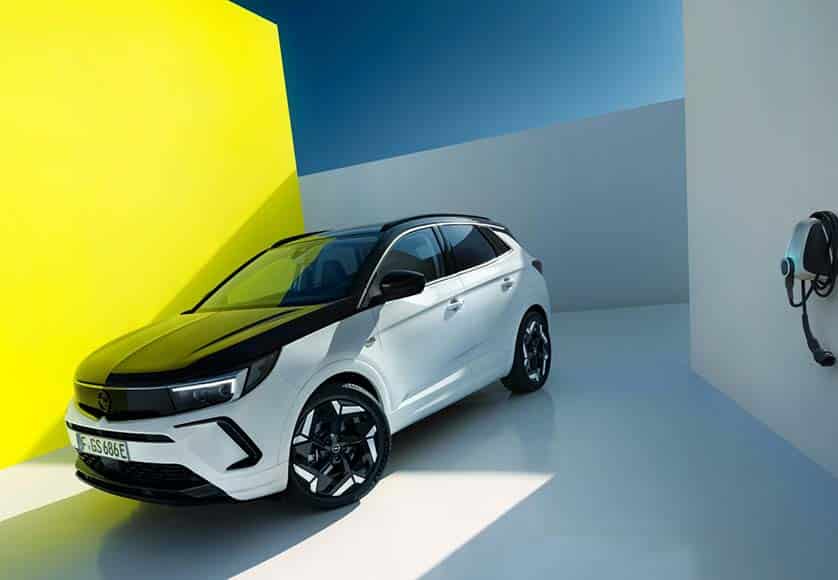The new Grandland GSe comes with 300 horse power and can emit as little as 28g of CO2 for every 100km. It got me curious.
There was a time in my family when the only car allowed through the garage door was an Opel. Both my grandfathers – childhood friends no less – only bought Opel during a large period of their lives.
In fact, my father’s father kept on buying them until his last car, a 1983 Opel Kadett D in blue I clearly recall riding in. My mother’s father eventually bought a Mercedes 300D W123 in 1981 and drove it until he died in 2022. That car was indestructible. I stand corrected: is indestructible, as I still own it today.
Anyway, my father also had a string of Opel models, from a Kadett E, to the first Astra and Zafira before finally going rogue and getting a Ford. I was very into the whole Opel thing and the first new car I bought was a 2005 Astra H. It was the coupé, called GTC, and I really loved that car. Thus I have a small soft spot for Opel, even owning a Speedster Turbo for a year a while back.
This means every time I drive an Opel there is this slight feeling of nostalgia, as if I am returning to an old friend. That old friend las week was the new Grandland GSe. GSe is a nod to Opel’s performance models of old, which were called GSi, but seeing they now have electric assistance, the ‘e’ replaced the ‘i’.

So the Grandland GSe is the top of the range model and, at €60.932, has a large price tag to live up to. The biggest of Opel crossovers is built on the Peugeot 3008 platform and uses technology co-developed by both brands.
The secret is not only in being able to give each model its own identity but – as both brands share quite a lot in other models as well – to also create a set of coherent and consistent brand characteristics that make the customer identify similarities between, say, a Grandland, a Mokka and a Corsa.
Because Peugeot has had for quite some time now a bigger brand awareness than Opel in the marketplace, it is up to the German constructor to find ways to change that and get its message through to consumers. Usually that means having to take a bolder direction when it comes to design, always the first element to distinguish a car. And that’s what Opel are doing.
Although you see a lot more Peugeot 3008s on the road then you do Opel Grandlands, with the latest restyling at least, to my eyes, the Opel is the more aesthetically appealing car – especially in GSe guise with its sportier look and specific flourishes that enhance the overall shape, clearly marking a distance in design terms to the French.
The Grandland GSe looks good. The ‘vizor’ grille, the stylized taillights and the proportions all work really well and it definitely stands out in an overcrowded crossover segment. I took to the two-tone paint quite well too.

It also drives better than a regular Grandland. Being the most powerful, most expensive Opel on sale brings an added layer of responsibility, but the car has a lot of good answers to the questions it makes. It’s not a sporty driving experience, but there is some willingness in those 300 horse power and the new and specific suspension calibration is an excellent compromise between rolling comfort and some newfound fun on tighter bends. The new Koni Frequency Selective Dampers make a world of difference, giving the Grandland a tautness it never knew it had.
A crucial point is the fact the GSe is four-wheel drive and it seems Opel have found a good balance for such a tall car with this system, where the front wheels do the heavy lifting and are powered by the 1.6 litre petrol engine and an electric motor, whereas the rears come into play with the help of another electric motor, providing more shove when needed, but also a much wider spectrum of driving modes and eco-credentials, allowing the Grandland to waft along in electric power for a maximum of 64km.
Make the most out of the batteries and Opel say you can get 1.2 litres for every 100km, with CO2 emissions of just 28g.
There is naturally no manual option, the sole transmission available being an eight-speed automatic that does the job in a competent manner, although it could be a little smoother at lower gears. I also wish the steering was a bit more talkative.
On the other hand, the cabin is great, mixing good materials with high-standard fit and finish and a touch of sportiness specific to the GSe I really enjoyed. There are obviously myriad info and entertainment systems for tech lovers.
The elephant in the room is without a doubt those €60.932. It’s a lot of money for any car, let alone a traditional crossover with, admittedly, a more interesting fire-power under its belly than usual. I guess the question is to be or not to be hybrid, i.e., whether you value the EV capability, as there are equally powerful rivals out there for less money but with a smaller eco-conscience.





















